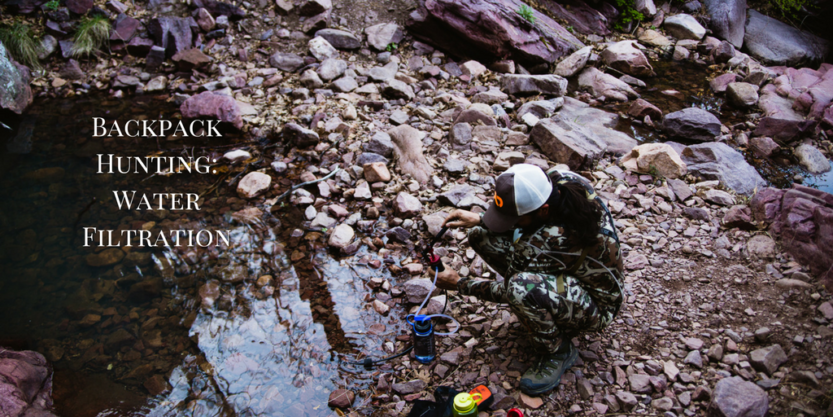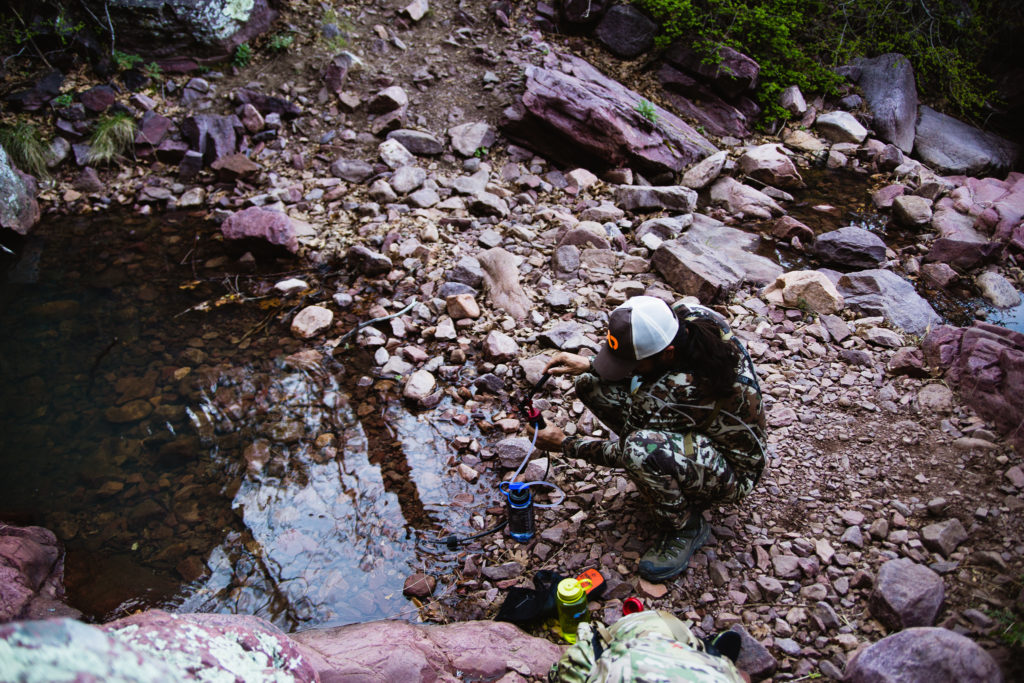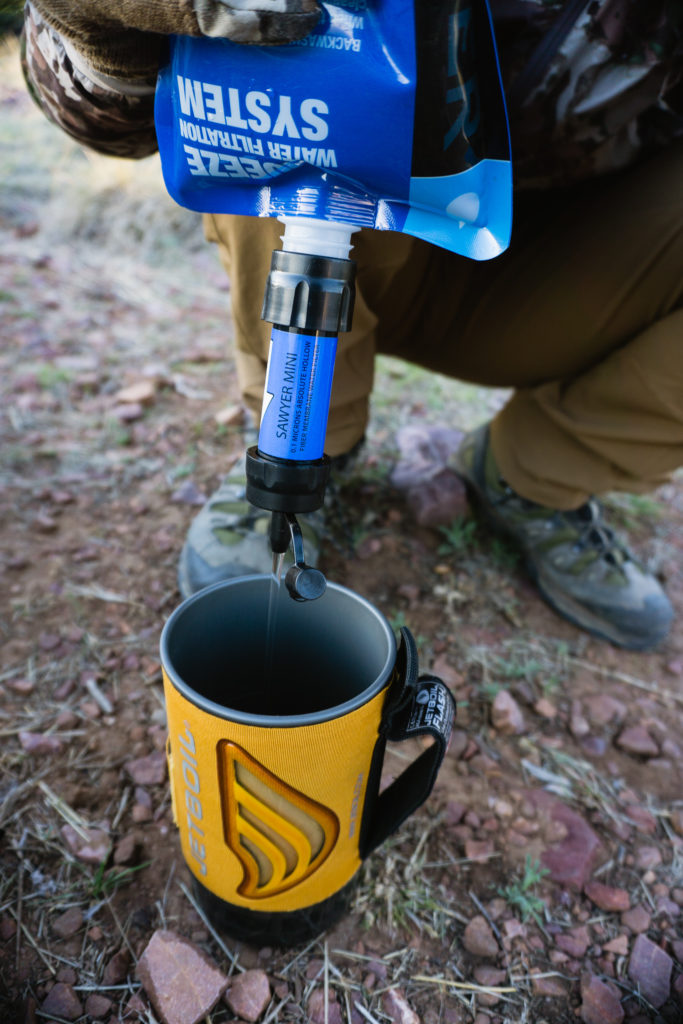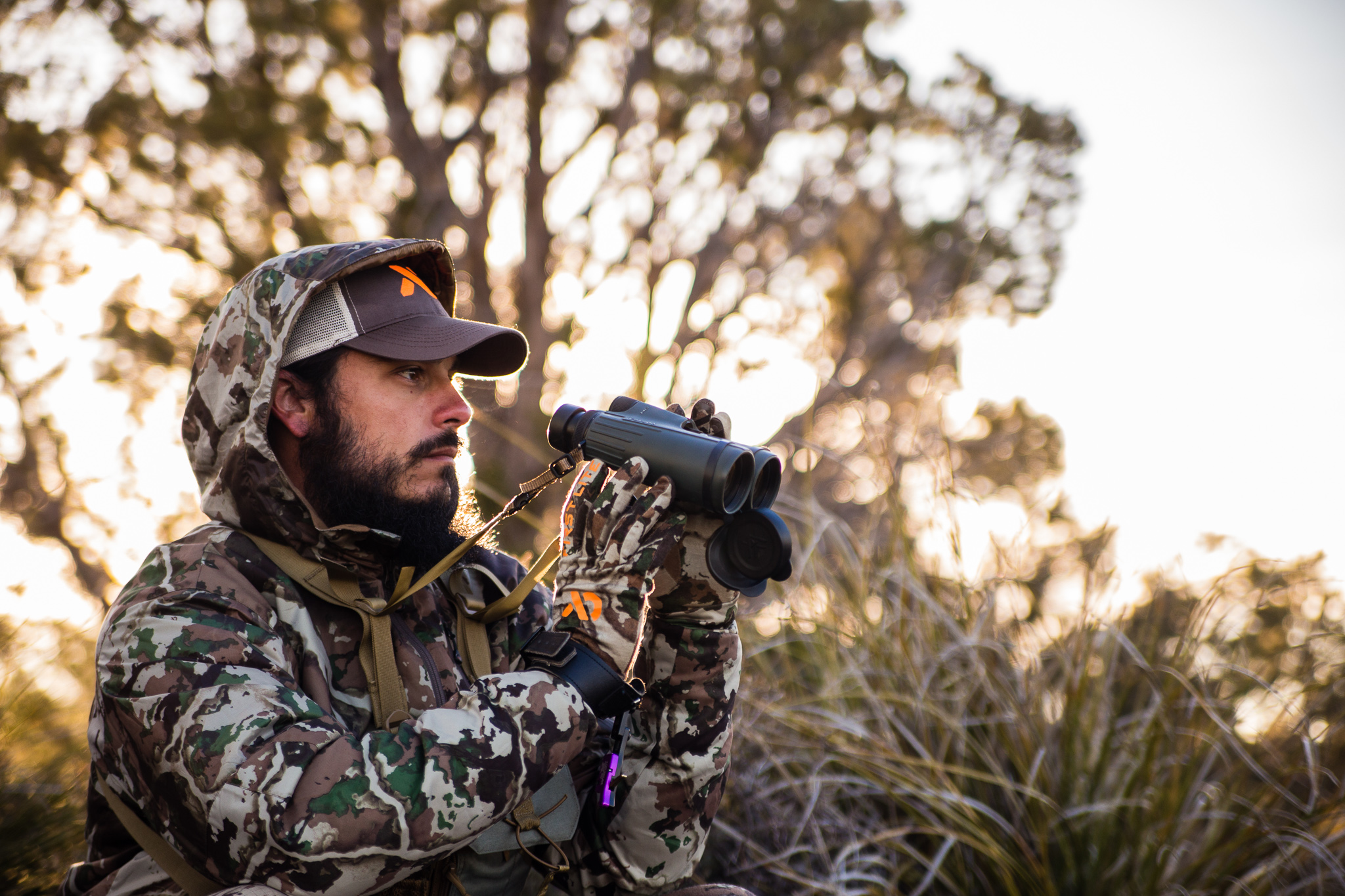

The next area I am going to cover on backcountry hunting is water and water filtration. You cannot get through a backpack hunt without water, so this is not something to turn your nose up at.

When I was a kid, I remember longing to drink straight from a creek or other wild body of water. Like hunting for your own food, it was one of those things that captivated me. I loved adventure movies that took place in the mountains and watched folks more than once, reach down into a stream with cupped hands, bring that ice cold mountain water up to their mouths, and drink it in. Man, I wanted to do that! Eventually, my wild dreams would come true!
Nowadays, I look back on the few times I did get to drink straight from a stream and consider myself lucky. Not just because I got to live out what I saw in the movies, but because I didn’t get sick. Such a shame right? We have to worry about getting sick from drinking the purest form of water in existence. It’s unfortunate, but true, and something that you need to take into consideration. I’ve heard quite a bit of stories from people getting infected with Cryptosporidium or Giardia. Both of which will leave you with WAY more time in the bathroom than you’d care for. For this reason, I think it is vitally important that you filter or treat the water you are planning on consuming for the duration of your backcountry endeavors.
There are all types of methods and products out there to ensure that you are drinking clean water on your trips. With a multitude of different routes to go, there is surely a way that you will find to work the best for you. I find that I really enjoy using both the pump and the squeeze filters and bounce between the two, depending on the trip. With that being said, I am going to cover what I believe to be the most common ways of treating your water. If you have a method that you prefer over the ones I’ve listed, please leave a comment. I’d love to hear what works best for you.

I think it is safe to say that water filtration pumps are probably the most common and well known method of cleaning your water. You have some sort of pumping mechanism with either a synthetic or ceramic filter, which has tons of micro pores all over it. These pores are so small that the contaminants found in water cannot fit through them, hence giving you clean water to drink once the dirty water has passed through said filtering cartridge. How the majority of pumps are set up are you have 2 different hoses, a dirty hose and a clean hose. The dirty hose is what goes into the creek, or other water source, and the clean hose goes into your water bladder, bottle, etc. I’d recommend trying to avoid cross contamination by keeping the clean and dirty hose separate. You could achieve this with using a ziploc and labeling which is which. You don’t want to accidentally use your dirty hose as your clean hose or visa versa. Also, be sure to dry out your hoses when you get home and not just leave them in airtight ziplocs.

This is probably my favorite way of filtering water, just because of the simplicity that it offers. When there is ample water available, I use a product called a Sawyer Squeeze. Nothing fancy about this. You fill up a bag with dirty water, screw on the filter, much like you would put a lid on a bottle, squeeze the water in the bag through the filter and into your bladder or bottle. That’s it. Easy, very lightweight(3 ounces), and effective. Another very similar filter is a gravity type of system. It’s pretty much the same concept, without the squeezing. You have a dirty bag that is filled with dirty water. There is a hose that is attached on the bottom of the bag that leads to a filter. With the natural force of gravity, the water flows through the filter into another hose(clean) and into your bladder or bottle. A slick and easy system. The one downside of both of these filters is you cannot let them freeze with excess water inside of them. Doing this will cause the filter to crack and let contaminants through. An easy way to remedy this is to just shake the remaining water out of the filter and put it in your sleeping bag with you.
 Another simple way to treat your water is the tried and true method of water purification tablets or drops. These are gonna be made with either iodine or chlorine dioxide. Both are going to kill the nasty stuff you don’t want to be drinking. Pretty cut and dry stuff here. Fill up a water bag or bottle with dirty water, apply the subscribed amount of drops or tabs per liter of water, sit back, and wait. Depending on the product and temperature, you are going to have to wait anywhere from 30 minutes to 4 hours. Most folks just wait the 30 minutes and call it good, others will let their water sit through the night with the drops or tabs. If you are an ultralight minimalist, this is one of the best ways to go. I should mention that no matter what filter I am carrying with me, I ALWAYS have drops or tabs in my pack as a backup. I definitely don’t want a hunt or scouting trip ruined by a broken filter. This is a great lightweight backup plan.
Another simple way to treat your water is the tried and true method of water purification tablets or drops. These are gonna be made with either iodine or chlorine dioxide. Both are going to kill the nasty stuff you don’t want to be drinking. Pretty cut and dry stuff here. Fill up a water bag or bottle with dirty water, apply the subscribed amount of drops or tabs per liter of water, sit back, and wait. Depending on the product and temperature, you are going to have to wait anywhere from 30 minutes to 4 hours. Most folks just wait the 30 minutes and call it good, others will let their water sit through the night with the drops or tabs. If you are an ultralight minimalist, this is one of the best ways to go. I should mention that no matter what filter I am carrying with me, I ALWAYS have drops or tabs in my pack as a backup. I definitely don’t want a hunt or scouting trip ruined by a broken filter. This is a great lightweight backup plan.
 Along with the different filters and methods I’ve outlined above, there are some other ways to get the job done as well. You could boil all of the water you plan to consume. Boiling kills anything and everything in your water. While this is effective, I myself wouldn’t coherently make the decision to use this route. Unless I was in a pinch, boiling all of the water I plan on drinking is just a lot of work. Backcountry hunts are hard enough as it is and I would rather spend all of the time I can hunting and focus on that. Maybe, it would work for you, but I’d rather not have to boil.
Along with the different filters and methods I’ve outlined above, there are some other ways to get the job done as well. You could boil all of the water you plan to consume. Boiling kills anything and everything in your water. While this is effective, I myself wouldn’t coherently make the decision to use this route. Unless I was in a pinch, boiling all of the water I plan on drinking is just a lot of work. Backcountry hunts are hard enough as it is and I would rather spend all of the time I can hunting and focus on that. Maybe, it would work for you, but I’d rather not have to boil.
Another route is non of the above. No, I am not telling you to risk it and just drink straight from a stream, although you could definitely do that. I am telling you that you could pack water into a predetermined location before season. We do this often here in Arizona, just because of lack of water in areas we like to hunt. By doing this, we don’t have to worry at all about the chore of filtering water and can just get back to camp at night and refill for the next day. It involves some work beforehand, but it is worth it. If you do this, make sure you stash your water either in the shade or you could even bury it. You don’t want the sun constantly blasting down on your gallons of water. I am not sure of the validity of this, but I’ve heard it said that the chemicals from the plastic can be released into the water when the sun is constantly on it for a long period of time. Like I said, not sure how true that is, but we try and play it safe.
There you have it! I hope that what I’ve written here will help you decide what road you want to go down, as far as water filtration is concerned. In the backcountry, water is life, not just for the animals we pursue. Having a solid system that is going to deliver and keep you hydrated is crucial. Lots of folks never get sick from drinking “dirty water.” I say, “good for them.” After all of the effort I put into preparing for hunting season, I don’t want that to be ruined by an easily remedied mistake. So, whether it is tablets or a pump, be prepared and be smart. The seasons are almost upon us and I am giddy with excitement!


Copyright 2019 Dialed In Hunter
Design by NXNW.